This post is scheduled for after Christmas because it’s a Christmas gift.
Knife 4 is another Damascus blade with a “polypearl” handle and star mosaic pins.
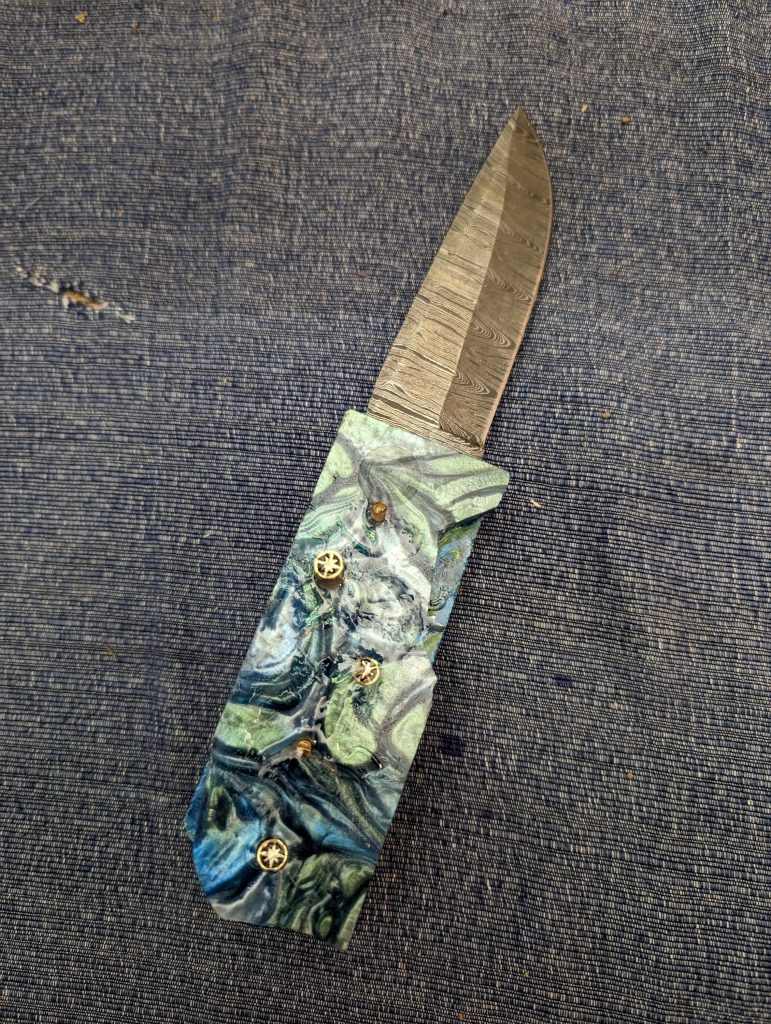

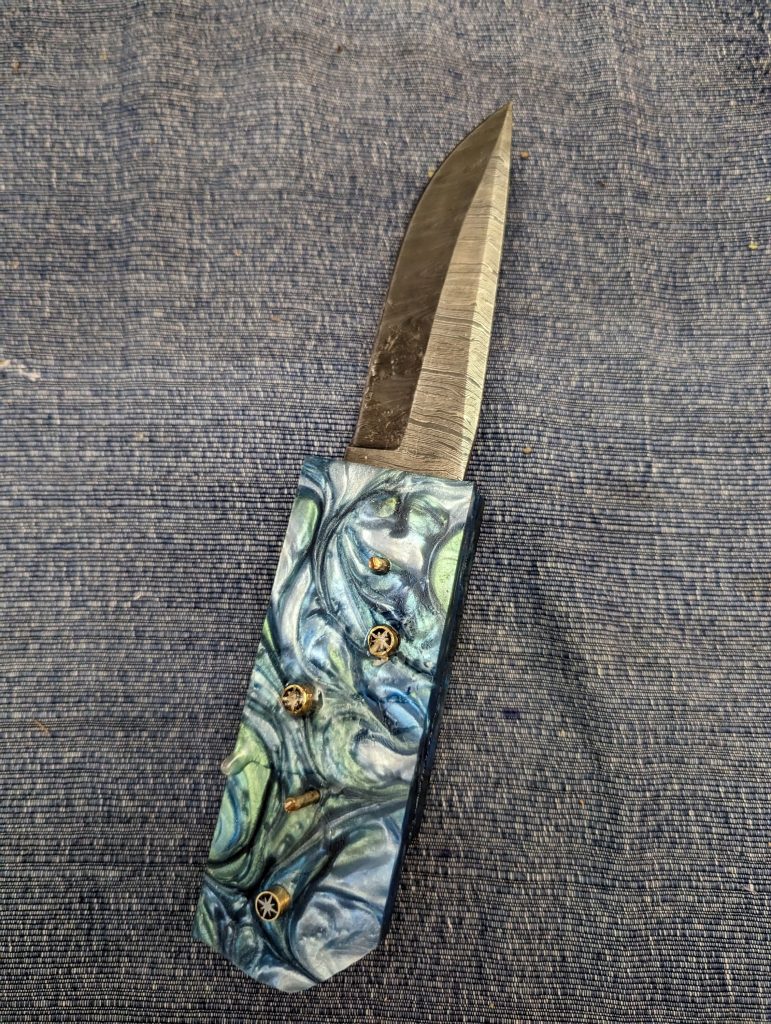

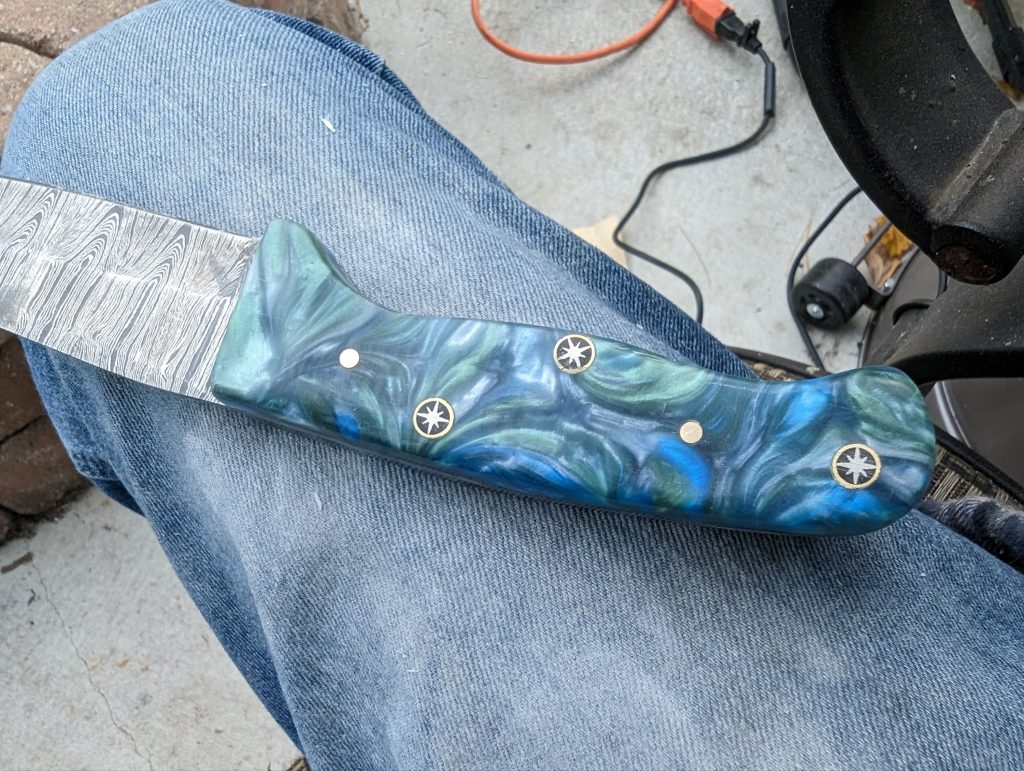
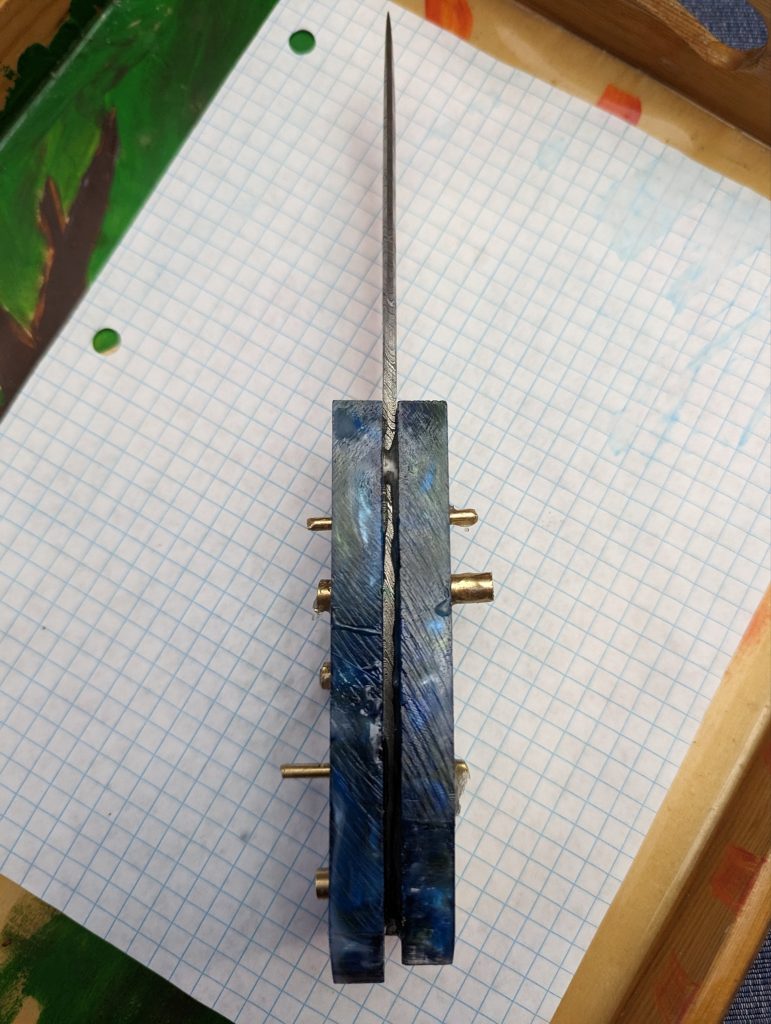
This post is scheduled for after Christmas because it’s a Christmas gift.
Knife 4 is another Damascus blade with a “polypearl” handle and star mosaic pins.






On the morning of Saturday, November 19, 2022, the Droidcon speakers were to meet at the Shell station on Waiyaki Way, which was just a short walk from my hotel. We were told we were going to leave promptly at 10:00, which was met with some laughter.
So at 9:30, I was dutifully waiting, all alone, at the Shell station.
By 10, there were a handful of people there, and other started arriving. By 11, there were enough people there to start talking about how transportation was going to work, and a little after 11, we started walking over to where we were going to meet our matatus for the trip. Which happened to be back over in front of the Jacaranda hotel.
We loaded into the matatu, where there was very, very loud music playing, and music videos on numerous TVs.
After another 20 minutes or so, another matatu arrived, and we redistributed between the two, and finally, just before noon, we pulled out, music thumping, towards the mystery outing.
We went through Langata, and Rongai, and out into Maasai land, and around 2:30, arrived at Olepolos Country Club, in Kiserian, for nyama choma.
I’m really glad I went. It was certainly not something that I would have chosen on my own, with the super-loud music and the hours of driving. But the time with new friends, and an amazing view once we got there, and good conversations there, were just a wonderful experience.
While there, Frank and I walked around, and he showed me the Maasai boma that was there on the property. (I did not take any pictures of that, since the people living there were not eager to be photographed.
I was fascinated to learn that, even now in 2022, the Maasai people live as they always have. Frank told me some about their traditions, and how they live. One man will have many wives, each of whom has their own hut for themselves and their kids. Each evening, the man will decide which wife he wants to stay with, and will plant his spear at the door of her hut. All the other residents of that hut will have to find other lodgings for the evening.
When he wants another wife, he is not obliged to inform her. Rather, he negotiates a bride price with her father, and the other wives fetch her, and help her build her new hut in the boma.
I also learned that daughters do not look at their father, as it is disrespectful. They would certainly not look him in the face, but must avert their eyes when he is near.
After dinner, the matatus had already left, and so I was put in a rather small car with 7 people, and we drove back to Nairobi, arriving quite late.
Another really delightful, and very long, day.
The final day of Droidcon was also excellent. Lots more great presentations, and great conversations.
At one point in the day, a crew from KBC came to interview various of the speakers, and we were featured on the news that evening, including a brief clip of my interview.
In the closing, we were told that there would be a speaker outing the next day, to an undisclosed location, and that we should be ready to leave promptly at 10 am from the meeting point. One speaker asked if this was 10 am Africa time, and everyone laughed.
More in this in the next post.
I attended a talk on Friday by Kennedy Kahiri about the relationship – often adversarial – between software developers and designers. Developers, he said, are interested in building the right thing, while designers tend to be focused on building the thing right. These different priorities can lead to conflict. He outlined seven things you can focus on to avoid these conflicts:
As an Amazonian, of course, it all comes back to #4 – the focus on the customer first in all decisions leads to the best solutions.
Overall, a really great talk.
On Friday at Droidcon, one of the sessions I attended was titled “Mastering Colour”, presented by Pamela Chemutai. She spent a lot of time talking about color theory, and about what colors go together in color schemes, but also why they go together, from a color theory perspective.
I don’t have a lot of notes from this session, but three things stand out.
She talked about color associations. For example, red is associated with danger, green with safety. I wonder if this is learned, or universal? Is it cultural? Does it change over time? Do we see colors with the same associations as ancient Greeks, for example? I am sure someone has written about this.
On the topic of color blindness, she recommended the website WhoCanUse, where you can experiment with different color schemes, and determine what people with different visual acuity will see.
Finally, on a completely unrelated topic, Pamela mentioned that she is a student at Dedan Kimathi University. Dedan Kimathi was a leader during the Mau Mau revolution. What’s fascinating to me about him is that when I was a kid, it was just known that Kimathi was a terrorist, a murderer, a generally terrible person. But today he is revered as one of the fathers of the Kenyan nation. There’s a statue of him downtown Nairobi. And several roads named after him.
(To be clear, I am not suggesting that he *was* a terrible person. I’m saying that how you learn a story depends almost entirely on who is telling it.)
I have long been fascinated by the question of who is a terrorist and who is a freedom fighter. It usually depends on who wins. George Washington, for example, was a terrorist and a rebel. But then he won, and he was a hero and a statesman.
Robert Mugabe is even more interesting, because first he was a terrorist (or a revolutionary). Then he was a hero, and the president, and the founder of the nation. And then he was a despot the destroyer of the economy.
So, yeah, huge tangent there, but I made a note that I need to read more about Kimathi, and about Mau Mau in general. And if you’re looking for recommendations, I encourage you to read Let’s Not Go To The Dogs Tonight by Alexandra Fuller, for a view of the Rhodesia/Zimbabwe revolution, from the perspective of an ex-pat living there at the time.
On Friday morning at Droidcon, the keynote was given by John Kimani, developer ecosystem manager at Google. He talked about the state of the Android ecosystem, and also about what’s coming next in Android.
There were a lot of fascinating statistics in the talk. Two that stood out:
There were 1 Billion Android devices activated in 2022.
There are currently 3 Billion Android devices active in the world. This includes not just phones, but also watches and cars, among other things.
Another interesting thing that he talked about was memory requirements – specifically, that in Android 11 and earlier, there was a specific focus on keeping the OS small, so that it could run on older devices. This is particularly important in the African market, where there are lots of older devices in rural areas. The focus on low memory footprint meant that Android apps were typically also low footprint, and available to those customers.
But in the latest Android versions, that is no longer required, and as of 11, devices with less than 1Gb are no longer supported. This means that 60% of Kenyan customers can not run the latest version of Android.
American and European software companies do tend to ignore the rest of the world, in the rush for the latest and fanciest. Another talk I attended emphasized the importance of visiting your customer *before* you start developing, so that you can ensure that you’re designing for them, rather than for your own ego. (Link goes here, once I’ve written that one up.)
Day 5 was spent all day at Droidcon, so I don’t have much more to write other than to mention that I attended a couple of talks, including one on WearOS development.
Then, on the way back to the hotel, I shared a cab with Louis and Rosario. Louis, who had given another talk about WearOS earlier that day, was wearing four different WearOS watches, and showed me some of how the different ones work differently.
He also offered a bunch of sample code, as well as suggestions of what I might work on – he says he’s got lots of ideas and no time to implement them. I might take him up on that.
On Wednesday, I attended a session about WearOS development, delivered by Kenichi Kambara and Josh Murigi.
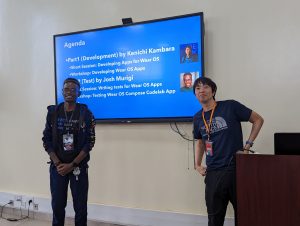
Much like the Android Auto presentation earlier in the day, this made me curious about doing some WearOS development. Major challenges – I don’t have a WearOS device, and I don’t have any actual ideas for something that I’d want to build for a watch. But, still, it looks very, very cool. And the frameworks for building apps look really easy to work with.
Or maybe it’s just that Kenichi and Josh were great presenters.
This is the kind of talk that I love attending – where I come away with a passion to try a new thing. Even though I realize that finding time for this is going to be very challenging.
Brief notes on a session I attended at Droidcon.ke.
Benard Ngoda presented on Android Auto development, which made me want to tinker with Android app dev. Maybe.
There are two main Android platforms for cars.
Android Auto is a platform for writing Android apps that are installed, and run, on a mobile phone, but can export some element of the UI to the car head unit.
Automotive OS, on the other hand, is for apps that are installed directly on the head unit itself. This is, as far as I can tell, harder, because every auto manufacturer, as well as every after-market car head unit manufacturer, have their own custom spin/distribution of it.
Benard’s github repo has a bunch of sample code for getting started. Apparently the best IDE for doing this is Android Studio. It’s unclear to me if you must use Android Studio, but it seems that everyone does.
I’ve alluded a few times to driving in Kenya, so here’s a little more on that topic.
It is terrifying. And the drivers seem completely at ease with the terror.
There are no stop lights. No stop signs. Barely any signs of any kind. And the drivers just know what to do. I was amazed by how few dents I saw on cars while I was there.
I did see some traffic lights while was there, 2 or 3 times, but they were purely decorative. Nobody was paying the least bit of attention them. And I did, in fact, see a stop sign once or twice. There was no evidence that anyone else was aware of what it meant.
When you come to a major intersection (did I mention, no lights or signs?) people just go. They find a gap, and they go for it, and the other drivers look like they’re not going to let them in, but somehow it works out. Clearance around cars is inches, at best, but it all somehow works out, with very few accidents.
And then sometimes, traffic just … stops. For 10, 15, 20 minutes. Just stops. And then something clears up, and it starts again. This happens a lot in the evenings.
There were numerous situations where we’d be flying along at 125kph (75 mph) and then suddenly we’d be at a standstill. As you inched along, you’d realize that a matatu (passenger bus) had just stopped in the road. Sometimes in the middle lane. Sometimes to pick up and drop off passengers, but sometimes it was because they had broken down, and were fixing it, right there, in the middle of the road. This was not an isolated event.
Meanwhile, among all of this, bicycles and motorcycles and pedestrians are all just weaving around among traffic, and I didn’t see one crash the entire time I was there.
Oh, also, any time the traffic slows down, there are vendors walking between the lanes selling everything, from food to live animals to toys to windshield wipers. I saw one guy selling neck ties, soccer balls, and an inflated Spiderman. Another had dog leashes and slingshots. And another had a book and two scrabble games. All just wandering in and out of traffic while we were driving along.
On the way to the airport on the last evening, the driver had a music video playing on the car stereo screen. Which seemed somehow not very safe. But he was navigating traffic just fine.
And then there are speed bumps. Just randomly, you’ll encounter a speed bump, And they are huge, such that most cars end up crabbing over them to avoid high-centering or, best case, scraping the bottom of the car on them. And folks don’t seem to be at all bothered by this.
When I left Nairobi, the population was just under 1 million. It’s now around 4.5 million, and a huge percentage of those people have cars, which was not the case in 1988.
There’s a fancy new expressway that goes from Westlands to the airport. You can get there in less than 20 minutes, even when traffic is terrible. It’s elevated, and is built in the median of other roads. Most people use the lower road, since the upper road is a toll road, so the expressway is largely empty.
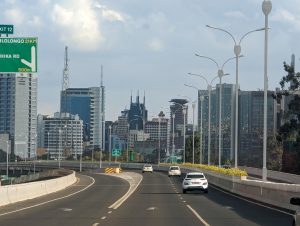
It turns out that there’s more to this story, though.
This entire expressway was built in just 8 months. This happened because the outgoing president, Uhuru Kenyatta, wanted to leave a legacy, and realized that he was running out of time. So he made a huge deal with the Chinese government to come in and build this. Also, he happens to have a large interest in the construction that happened to get the contract. And this was largely done without the government approving it. He just … did it.
So there’s definitely a love/hate thing with the road. It greatly improves traffic – although only for a subset of the drivers who want to pay a toll. But it leaves the country with a huge debt to pay – both financial, and in leverage by the Chinese government.
Also, in the process, thousands of trees were cut down, which gave a lot of shade to pedestrians. And it’s made it very difficult for pedestrians to get certain places, because the construction destroyed a lot of sidewalks in places where there used to be a lot of pedestrian traffic. People were very upset by the trees, some of which were decades old and popular gathering places.
I briefly considered renting a car, when I was planning this trip. I’m awful glad I didn’t.